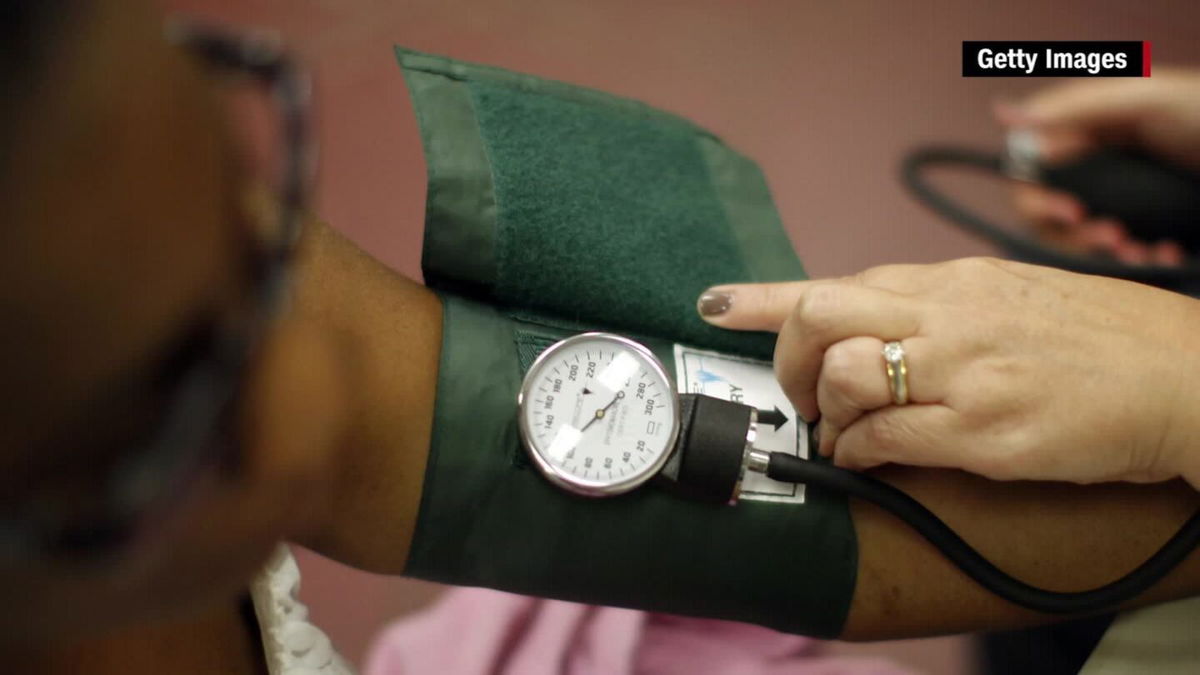According to a recent study, blood pressure readings may not be reliable if an individual’s arm is not positioned appropriately.
According to a study published on Monday in JAMA Internal Medicine, blood pressure readings taken while people held their arms in three different positions—leaning on a surface, resting on their lap, or hanging by the side of their body—showed that certain positions could result in a significant increase in systolic pressure, the upper number in a blood pressure reading. The term “systolic” describes the pressure that is present in an individual’s arteries during the heart’s blood circulation.

The extent of the difference, nearly 7 points in the arm hanging position, was a surprise, said the study’s principal author, Dr. Tammy Brady, a pediatrician and epidemiologist and medical director of the pediatric hypertension program at the Johns Hopkins Children’s Center.
The experiment was planned, but the researchers had no idea what to anticipate. She stated, “There was a chance that arm position was not significant.”
Brady expressed his hope that this will educate individuals on how to take care of themselves and how to properly advise their healthcare professional. “Patients ought to have the authority to ensure that the blood pressure reading is accurate.”
In order to obtain a reliable reading, the American Heart Association advises supporting the patient’s arm. Additionally, the rules state:
- Take a 30-minute break from smoking, coffee, and exercise.
- The mid-heart level is the ideal location for the blood pressure cuff.
- The patient’s back should be supported and their feet should be flat on the ground.
When the measured force of blood flowing through blood vessels is more than what is regarded as normal—less than 120 systolic pressure and less than 80 diastolic pressure—nearly half of adult Americans suffer from high blood pressure. The pressure in the arteries between heartbeats is called diastolic. Although hypertension frequently has little symptoms, if left untreated, it can raise the risk of heart attack, stroke, and other dangerous cardiovascular diseases.
Brady and her colleagues recruited 133 participants, 52% of whom were female and 78% of whom were Black, to investigate if arm posture affected blood pressure readings. The age range of the research participants was 18 to 80.
Each of the three arm positions was used to measure blood pressure for each participant, and after that, they were randomly allocated to one of six groups based on which sequence the positions were adopted.
The diastolic blood pressure, or the bottom number, was 4.4 points higher than in the supported condition when participants’ arms were hanging by their sides during the reading, according to the researchers, while their systolic blood pressure was 6.5 points higher when participants’ arms were resting on a desk.

Similar to this, when people’s arms were resting on their laps, their diastolic blood pressure increased by 4 points and their systolic blood pressure increased by 3.9 points compared to when their arms were supported by a surface.
These variations may result in an increase in the number of hypertension diagnoses and the prescription of unnecessary drugs to patients.
For instance, if a person’s blood pressure is tested on a hanging arm and their real blood pressure is 134, the result might be over 140, which is classified as stage 2 hypertension.
According to Dr. Karyn Singer, assistant vice president of chronic illness and prevention at NYC Health + Hospitals and assistant professor of medicine at New York University, misplacing a patient’s arm “sadly is a common experience.” “I have experienced that as a patient.”
The study gives a “piece of evidence that is really critical,” said Singer, who was not associated with the new research. The degree to which arm posture affects blood pressure measurements has not yet been determined.
“Be aware of the proper blood pressure measuring technique and to advocate for themselves if they think the blood pressure reading is higher than they think it should be,” is Singer’s major advice to patients.
Dr. Megan Kamath has also experienced similar things as a patient at several offices and healthcare facilities.
According to Kamath, a UCLA Health cardiologist, “there is a pretty significant difference in blood pressure readings depending on arm position.”
“This research is intriguing,” remarked Kamath, who did not participate in the study. “After reading it, I was struck by the thought that these researchers, using a basic study design, had discovered some significant practical implications that could determine whether a patient receives hypertension treatment or not.”
According to Singer, patients who get unnecessary blood pressure-lowering medications may have adverse effects including weariness, lightheadedness, dizziness, and blurred vision.
The findings, according to Dr. Matthew Tomey, a cardiologist at Mount Sinai Fuster Heart Hospital in New York City, back up a patient’s request that a physician take their blood pressure “right way.”
Tomey, who was not involved in the current study, stated that the variations discovered by the researchers may be sufficient to transfer a person from one blood pressure group to another.





